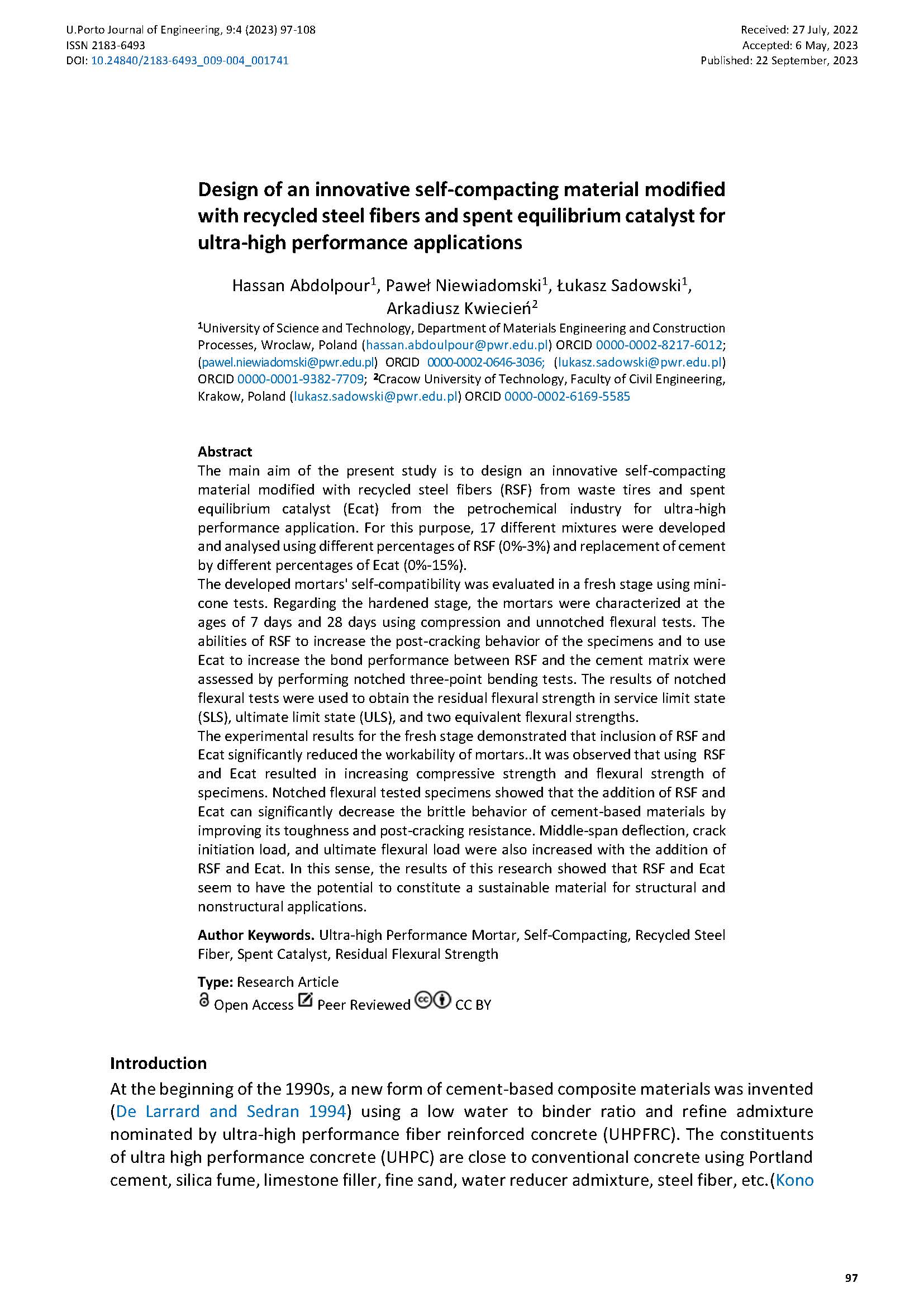Design of an innovative self-compacting material modified with recycled steel fibers and spent equilibrium catalyst for ultra-high performance applications
Main Article Content
Abstract
The main aim of the present study is to design an innovative self-compacting material modified with recycled steel fibers (RSF) from waste tires and spent equilibrium catalyst (Ecat) from the petrochemical industry for ultra-high performance application. For this purpose, 17 different mixtures were developed and analysed using different percentages of RSF (0%-3%) and replacement of cement by different percentages of Ecat (0%-15%).
The developed mortars' self-compatibility was evaluated in a fresh stage using mini-cone tests. Regarding the hardened stage, the mortars were characterized at the ages of 7 days and 28 days using compression and unnotched flexural tests. The abilities of RSF to increase the post-cracking behavior of the specimens and to use Ecat to increase the bond performance between RSF and the cement matrix were assessed by performing notched three-point bending tests. The results of notched flexural tests were used to obtain the residual flexural strength in service limit state (SLS), ultimate limit state (ULS), and two equivalent flexural strengths.
The experimental results for the fresh stage demonstrated that inclusion of RSF and Ecat significantly reduced the workability of mortars. The beneficial use of RSF and Ecat was observed to increase compressive strength and flexural strength for 7 days and 28 days of tested specimens. Notched flexural tested specimens showed that the addition of RSF and Ecat can significantly decrease the brittle behavior of cement-based materials by improving its toughness and post-cracking resistance. Middle-span deflection, crack initiation load, and ultimate flexural load were also increased with the addition of RSF and Ecat. In this sense, the results of this research showed that RSF and Ecat seem to have the potential to constitute a sustainable material for structural and nonstructural applications.
Downloads
Article Details

This work is licensed under a Creative Commons Attribution 4.0 International License.
Authors who publish with this journal agree to the following terms:
- Authors retain copyright and grant the journal right of first publication with the work simultaneously licensed under a Creative Commons Attribution License that allows others to share the work with an acknowledgement of the work's authorship and initial publication in this journal.
- Authors grant the journal the rights to provide the article in all forms and media so the article can be used on the latest technology even after publication and ensure its long-term preservation.
- Authors are able to enter into separate, additional contractual arrangements for the non-exclusive distribution of the journal's published version of the work (e.g., post it to an institutional repository or publish it in a book), with an acknowledgement of its initial publication in this journal.
- Authors are permitted and encouraged to post their work online (e.g., in institutional repositories or on their website) prior to and during the submission process, as it can lead to productive exchanges, as well as earlier and greater citation of published work (See The Effect of Open Access).

